Two artists paint and draw together in an old elementary school-turned-art studio in a secluded central Utah town. The friends joke and laugh as they work together to create inventive pieces of art.
The men have put on art shows together, sold paintings to galleries around the country and collaborated for almost 20 years.
One of the men pursued art in his graduate studies and is a known and respected professional artist around the country. The other artist only started painting when approached by his friend 20 years ago, but he is no less of a visionary.
Perhaps the biggest difference between the two artists is that one is renowned LDS painter Brian Kershisnik, and the other is his friend and colleague, Joe Adams, who has Down syndrome.
Kershisnik, whose paintings frequent the pages of LDS Church publications such as the “Ensign,” has displayed artwork in galleries from Boston to Park City and throughout the rest of the country.
Kershisnik has achieved success in many realms of art; not only has he become well known in his church community because of his religious affiliations, but he is also continuously receiving praise from prestigious art galleries all over the country.
A celebrated artist, Kershisnik has his hand in a large share of paintings — some with religious undertones, others focused on family, and a collection of paintings done with Adams.
Kershisnik and Adams’ collaborations have been viewed in galleries from Portland, Oregon, to Austin, Texas. Art Access, a gallery in Salt Lake City, has supported the work of Kershisnik and Adams for years, hosting their art shows since the beginning of their collaborative efforts.
Kershisnik and Adams met in Kanosh, Utah, through their church congregation. Kershisnik moved to Kanosh, where he still has an art studio, shortly after finishing his art education at the University of Texas.
They began working together when Kershisnik heard about an exhibit by the Springville Museum of Art called “Inclusions,” where the museum’s contributing artists would collaborate with people with special needs. Kershisnik recalls calling Adams’ parents and asking if he would be interested in working with him. Adams’ dad said, “Ask Joe.” Kershisnik remembers asking Adams if he wanted to paint with him and receiving a boisterous “Yeah” on the other end of the line.
“I have that piece in my house, that first piece,” Kershisnik said of Adams’s first painting. The painting is a portrait of Adams’ dog, entitled “My dog, Frog.”
After the Springville art show, Kershisnik and Adams continued their work together. Adams would join Kershisnik in his art studio almost every day to work on his drawings and paintings.
Kershisnik recalled a time shortly after beginning his work with Adams when Adams lost interest in art. “I couldn’t get him to come back to the studio, and it seemed like he’d had a great time,” Kershisnik said.
One day while Adams was playing with his dog in his front yard, Kershisnik sat and talked to him about the art studio. Adams finally revealed that he did not like the stairs there. They began working from Adams’ house for a while, painting in his kitchen after dinner while his mom helped Kershisnik understand and communicate better with him.
“When Joe is feeling good and he’s over here, I mean it’s great; we have a great time,” Kershisnik said about his time in the studio with Adams. “He’s going to town. Some days he’ll be over here for hours, just wants to keep drawing.
“But if he doesn’t want to be here, he just sucks all of the joy out of the whole room,” Kershisnik said with a laugh. “Often if he’s feeling a little grumpy we’ll just go down to the store and get him a liter of Coke, and that cheers him up.”
Kershisnik found himself inspired by Adams’ work, often collaborating in a sense of taking bits and pieces of ideas from each other.
“He copies my paintings all the time,” Kershisnik said, “(He) looks at the wall and copies what I do, and I pretty shamelessly borrow from him as well.”
Kershisnik remembers being impressed by the simplicity of Adams’ paintings and their titles, musing that even he could not come up with titles like Adams does.
Adams’ paintings often include pictures of his dog, his family and Kershisnik.
“There’s that beautiful innocence, yet he’s almost my age,” Kershisnik said. “I think he’s incredibly skillful, in many ways more skillful than I, but his vision seems to correspond to when my children were about 3.”
Kershisnik continues to be impressed by the balance of Adams’ innocence with the experience he has gained.
“I’ve always been very influenced by the work of children, sort of a work that is on one level very sophisticated and on another level very innocent and very childlike,” Kershisnik said. “I was never really able to pull that off by myself, but working with Joe, that’s just where Joe is.”
Their collaboration process has been modified over the years so that Adams draws figures and Kershisnik paints.
“What tended to happen is as he became more confident with paint, then it became more about the activity of applying the paint than about the drawing,” Kershisnik said. “So he would do a beautiful drawing, then completely bury it under ink or paint or whatever was at hand.”
Kershisnik talked about how Adams is not interested in painting on his own. “I often have talked to him about looking into giving him paper and things like that that he can work on but he just is, ‘No,'” Kershisnik said, mimicking Adams. “He wants to work. He wants to come to the studio. It’s his job. He thinks that is his job. So that’s what he does at the studio. And he hadn’t done any artwork to speak of before.”
Kershisnik said the collaboration has blessed his life.
“People have said, ‘Oh, it’s so nice for you to teach Joe lessons,’ and I’m not teaching Joe anything,” Kershisnik said. “He comes to the studio, and I’m learning more from Joe than he is from me. I just set him up, and he gets to work drawing and draws his little people in his world, and if he wants to draw something it never occurs to him that he can’t; he just does it. Sometimes I’ll suggest things that I want him to draw, but he’s generally very resistant to any other idea or other suggestions.”
The artists do not collaborate as often as they have in the past, as Kershisnik does not live in Kanosh full- time. The artists get together about five times a year now to work together.
“He still hits me up for money,” Kershisnik said. “I say, ‘We have to sell something first Joe.'”
Kershisnik said in the studio Adams writes his name “Joe Adams” on a piece of paper and asks Kershisnik to give it to his assistant. He wants to make sure he gets clocked in and gets paid for his work.
The unlikely collaborators continue to make art to be received by many. Kershisnik is hopeful that they will continue making art together for years to come. Kershisnik remembers fondly all of his times in the studio with Adams, who often leaves him with a wave and the exclamation, “It’s my day off tomorrow!”

 435.215.7170
435.215.7170




 Service Areas
Service Areas























